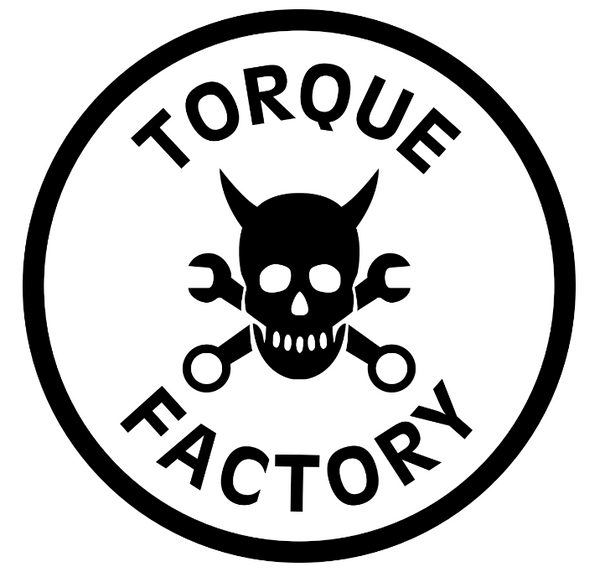Development Notes: Y-Pipe, MAF/Filter and Inlets
Development details of the Torque Factory 2.7 Y-Pipe and inlet components.
Work started on our B5 S4 in 2020, it was intended to be a fast road car that can race ½ mile and some club events. The engine essentially needed a full rebuild and we did a thorough budget build.
- Engine “BF” short block
- H-Beam connecting rods
- Torque-Factory/ARP main stud kit
- Rebuilt Stock 2.7 heads
- Torque Factory/BC valve spring and titanium retainers
- 2.8 intake camshafts
- No porting, stock manifolds and throttle body.
- K24/RS6 Hybrids
- Intercoolers 10” x 8”x 4.5” with 2.5” inlets/outlets.
- Induction
- 2.125” inlets
- S4 Y-Pipe
- ETSpec 3.5” (85mm) MAF and filter combination
- ETSpec tuning
After our initial assembly and tuning the car ran great and made 585 wheel horsepower on a Dynojet with consistent 2.6 FATS.

At this point we were satisfied with the tune and took measurements of the following to understand how everything was working.
- Restriction (inch/H2O) From Filter
- Restriction (inch/H2O) Including Filter and 3.5” MAF/Intake
- Restriction (inch/H2O) @ Turbo Inducer (Including Y-Pipe, Inlets, MAF, Filter)
- Boost (psi) @ 6500
- Turbine Pressure (psi) @ EGT sensor
- Exhaust Pressure (psi) @ 2nd O2
- Compressor Pressure Ratio (est)
This data allowed us to utilize the turbo calculation tool provided by Borg Warner. As seen in the compressor maps and details below.
(note: Borg Warner does not have an exact match to our RS6/K24 hybrids. The closest match was used as a point of reference.)



Pin 2 is 32 psi, it is not even on the map anymore. At this point we realized that changes needed to be made.

After review of our logs and BW’s tools, we concluded that more boost was not a smart option. Which would result in a spiral of inefficiency and shortened turbocharger life unless we could find some chokepoints in our systems...
We enjoyed the car for a bit while considering where we had the best potential for improvements. The area that showed the most potential was reducing the restriction to the inducer stage of the turbocharger.
We swapped our s4 Y-Pipe for the larger RS4 unit and collected the data. Pin 1 is the S4 Y-Pipe and pin 2 is the RS4. While the RS4 unit helped it was not enough for a measurable gain.

This validated the direction of our testing and we acquired a “THE Tuner” Y-pipe which was the largest commercially available option. We also added a 4” ETSpec MAF and filter. Although this helped, the restriction at the turbo inducer was still high so we started exploring other options.
We started to design a Y-Pipe that was the largest we could fit under the hood with a 4.5” inlet and 3.5” outlets. Creating a part that maintained a constant cross section meant the runners had be flattened and widened for hood clearance.
After our first 3d prototype was complete we contacted Flyboy at MyAudiS4.com and requested he flow bench test the Tuner and our Y-Pipe, 4.5” and 4.0” MAF. He had already tested S4 and RS4 Y-Pipes with the same flow bench so we could compare with assurance there was good consistency.
The tests can be viewed at this link.
We then installed our prototype Y-Pipe, MAF, and inlets. Our tuner (Blake @ ETSpec) was able to tune the 4.5” MAF for smooth idle and driveability. At the completion of tuning we had 32 psi at peak power and a usable power band up to 8000 rpm. FATS times had now dropped from 2.6 to 2.2 with similar stress levels on the turbos.
Pin #1 is the original configuration at 26psi and pin #2 is with the improved inlet parts and 32 psi of boost. As you can see the calculated pressure ratio is comparable with much more power and not falling off the map. This indicates that the increased boost is not generating any more heat, surge or shaft speed.




Car was running great and we were satisfied we had extracted as much as possible from the inducer stage.
Nerd Notes:- Assuming 1000hPa atmospheric pressure
- 154hPa depression or 846 hPa absolute inlet pressure
- 52hPa depression or 948 hPa absolute inlet pressure
- 27PSI = 2861hPa absolute boost 32PSI = 3206hPa absolute boost
- 2861/846=3.38 Pressure ratio
Math checks out, 5 extra PSI while keeping the same pressure ratio. Reducing turbo inlet restriction is about as close to a free lunch as you can get especially at high PRs.


